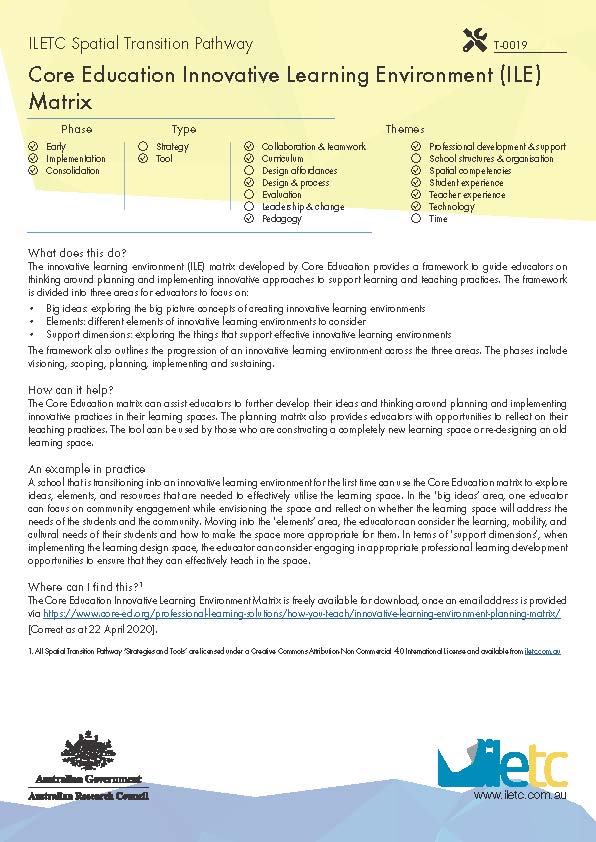| Introduction | Wayfinding activity | Spatial typologies | Spatial transition case studies | Spatial transition resources |
Spatial Transition Pathway
The Spatial Transition Pathway provides a framework for the strategies and tools which support teachers to make the journey of change into innovative learning environments. Strategy is defined as an explicit concept, theory or practice that enhances teachers’ use of innovative learning environments. A tool is an identifiable activity or protocol, that implements a strategy. You can use the database to search for strategies and tools by temporal phase or transition theme(s). If you would like to contribute a strategy or tool, please contact the ILETC team.
Core Education Innovative Learning Environment (ILE) Matrix
The innovative learning environment (ILE) matrix developed by Core Education provides a framework to guide educators on thinking around planning and implementing innovative approaches to support learning and teaching practices. The framework is divided into three areas for educators to focus on:
- Big ideas: exploring the big picture concepts of creating innovative learning environments
- Elements: different elements of innovative learning environments to consider
- Support dimensions: exploring the things that support effective innovative learning environments
The framework also outlines the progression of an innovative learning environment across the three areas. The phases include visioning, scoping, planning, implementing and sustaining.

